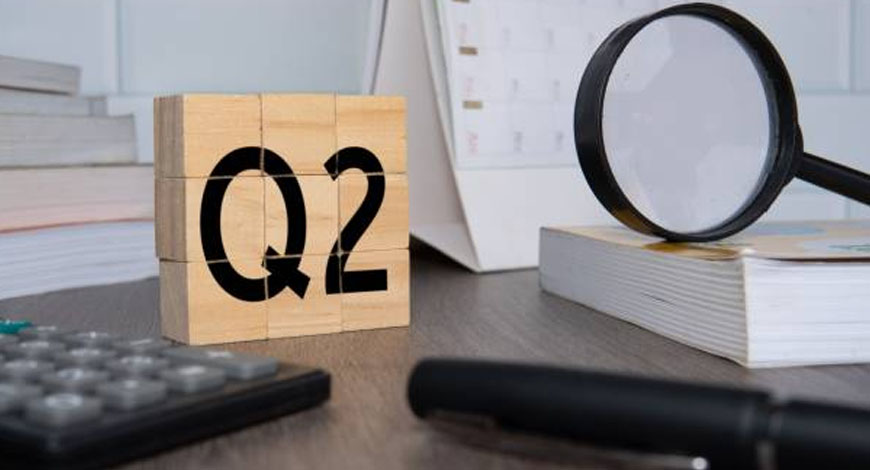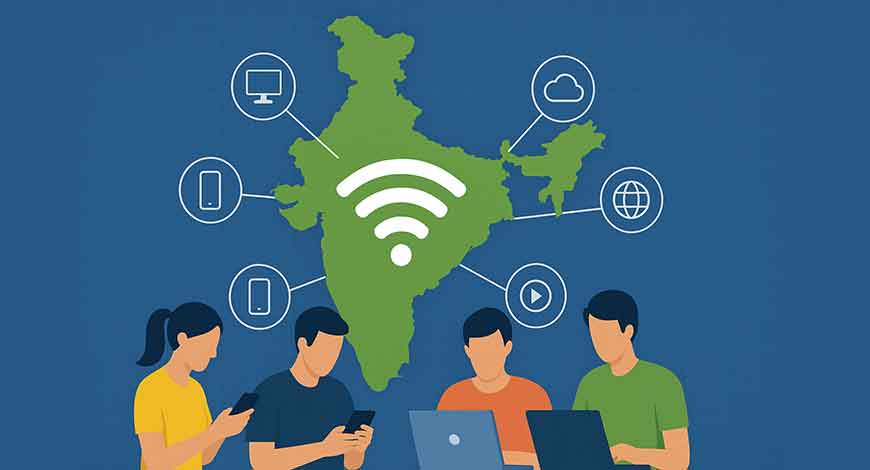India has officially crossed a historic digital milestone: the number of internet subscribers has surpassed 100 crore (1 billion) as of June 2025. According to the latest telecom data, the March–June 2025 quarter recorded a 3.48% growth in internet users, showing how deeply connectivity has penetrated across the country.
This achievement not only cements India’s place as one of the world’s largest online populations but also reflects the success of Digital India initiatives, affordable data plans, and rural internet expansion.
India’s Journey to 100 Crore Internet Users
Just over a decade ago, internet access was limited to urban centers and a small percentage of the population. However, the introduction of low-cost smartphones, cheaper data tariffs, and government-backed digital inclusion programs transformed the landscape.
- In 2015, India had around 30 crore users.
- By 2020, the base had grown to 70 crore, largely fueled by the Jio revolution.
- By mid-2025, India crossed the 100 crore milestone, marking one of the fastest internet adoption journeys globally.
Rural vs. Urban Internet Growth
One of the key drivers of this surge is rural connectivity.
- Urban areas already have high penetration levels, with nearly 70–75% of the population connected.
- Rural areas, however, have been the growth engine in recent years, thanks to:
- Affordable smartphones under ₹5,000
- BharatNet fiber rollout in villages
- Regional-language apps and OTT platforms
- Digital payment adoption through UPI in rural economies
This rural shift is critical because more than 65% of India’s population still resides outside urban areas, meaning the digital story is far from over.
Mobile Internet Dominance
Out of the 100 crore internet subscribers, the vast majority are mobile internet users. India’s internet boom has been driven primarily by:
- Low-cost 4G plans from Reliance Jio, Airtel, and Vodafone Idea
- Rapid 5G rollout in tier-1 and tier-2 cities since 2023
- Bundled OTT and app services with mobile data packs
Broadband Internet (Fixed-Line)
While mobile dominates, fixed broadband has also been growing steadily.
- Currently, broadband subscribers stand at around 40–50 million, a fraction of total users.
- However, demand is rising due to remote work, online learning, and gaming.
- Fiber-to-the-home (FTTH) expansion from JioFiber, Airtel Xstream, and BSNL Bharat Fiber is set to accelerate growth.
What’s Driving This Surge?
- Affordable Data Costs
- India continues to enjoy one of the lowest mobile data rates globally, averaging under ₹10/GB.
- Smartphone Penetration
- Over 800 million smartphone users now form the backbone of India’s internet base.
- Digital Payments & E-commerce
- UPI transactions cross billions each month, pushing even first-time users online.
- Government Push
- Programs like Digital India, BharatNet, and PM-WANI Wi-Fi hotspots have expanded reach.
- OTT & Entertainment Demand
- Streaming platforms, regional content, and gaming are keeping Indians online longer than ever.
The Global Context
India’s internet subscriber base is now second only to China, which has around 1.1–1.2 billion users. However, India stands out due to:
- Higher growth rate compared to mature markets.
- Cheaper data costs than global averages.
- Larger untapped rural market still waiting to come online.
This means India’s digital economy is set to become a key driver of global internet traffic in the next few years.
Challenges in India’s Internet Growth
Despite the achievement, several challenges remain:
- Digital Divide
- Urban–rural disparities persist, with many rural users still lacking high-speed connections.
- Network Quality Issues
- Call drops, slow speeds in congested areas, and inconsistent coverage remain common complaints.
- Cybersecurity Concerns
- With more first-time users online, India faces rising risks of cyber fraud, phishing, and scams.
- Affordability of Devices
- While data is cheap, the cost of smartphones and laptops is still a barrier for some low-income groups.
The Road Ahead: India’s Digital Future
With internet users crossing 100 crore, the focus will now shift to quality, inclusivity, and advanced services.
- 5G Expansion: Wider rollout in tier-2 and tier-3 cities will boost adoption.
- Digital Public Infrastructure: Platforms like UPI, Aadhaar, ONDC (Open Network for Digital Commerce) will create new digital ecosystems.
- Regional Content Boom: Vernacular internet will dominate the next wave of growth.
- AI & IoT: As AI tools and smart devices become mainstream, internet dependence will grow further.
- Rural Digital Literacy: Awareness programs will ensure new users benefit safely from connectivity.
Expert Take
Industry experts believe the next 10 crore users will be the hardest to reach, as they are mostly from remote or economically weaker sections. Bridging this gap will require:
- Affordable entry-level devices
- Community Wi-Fi models
- Government and private sector collaboration
If India succeeds, it could not only expand its user base but also redefine global digital participation.
Conclusion
India’s internet subscriber base crossing 100 crore is a milestone that highlights both the success of digital transformation and the potential of untapped markets.
With a 3.48% quarterly growth rate, expanding rural access, and government-backed digital infrastructure, India is well-positioned to drive the next wave of global internet adoption.
The coming years will focus not just on numbers but on ensuring reliable, inclusive, and safe digital connectivity for every Indian.
The NewsBit Bureau

